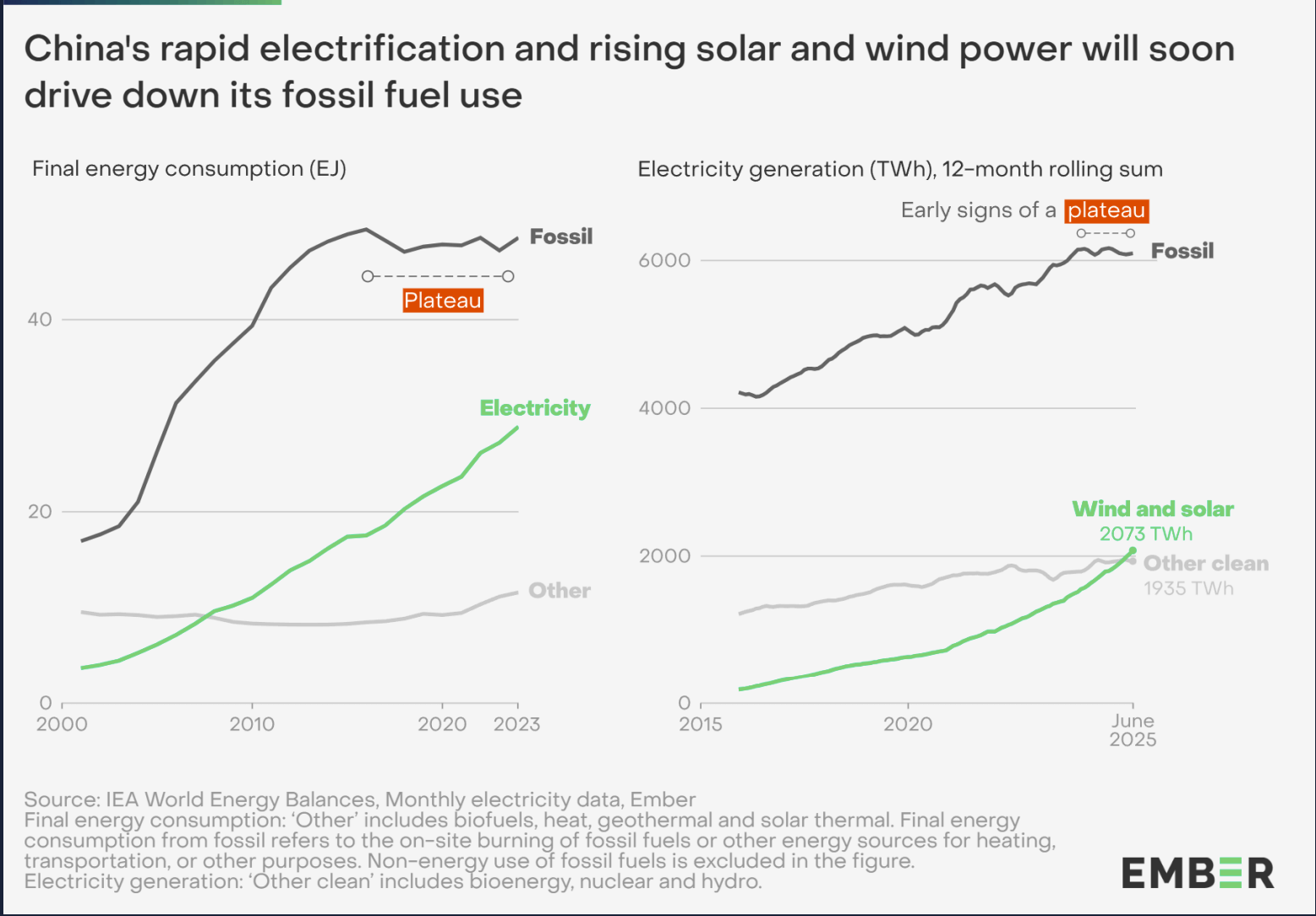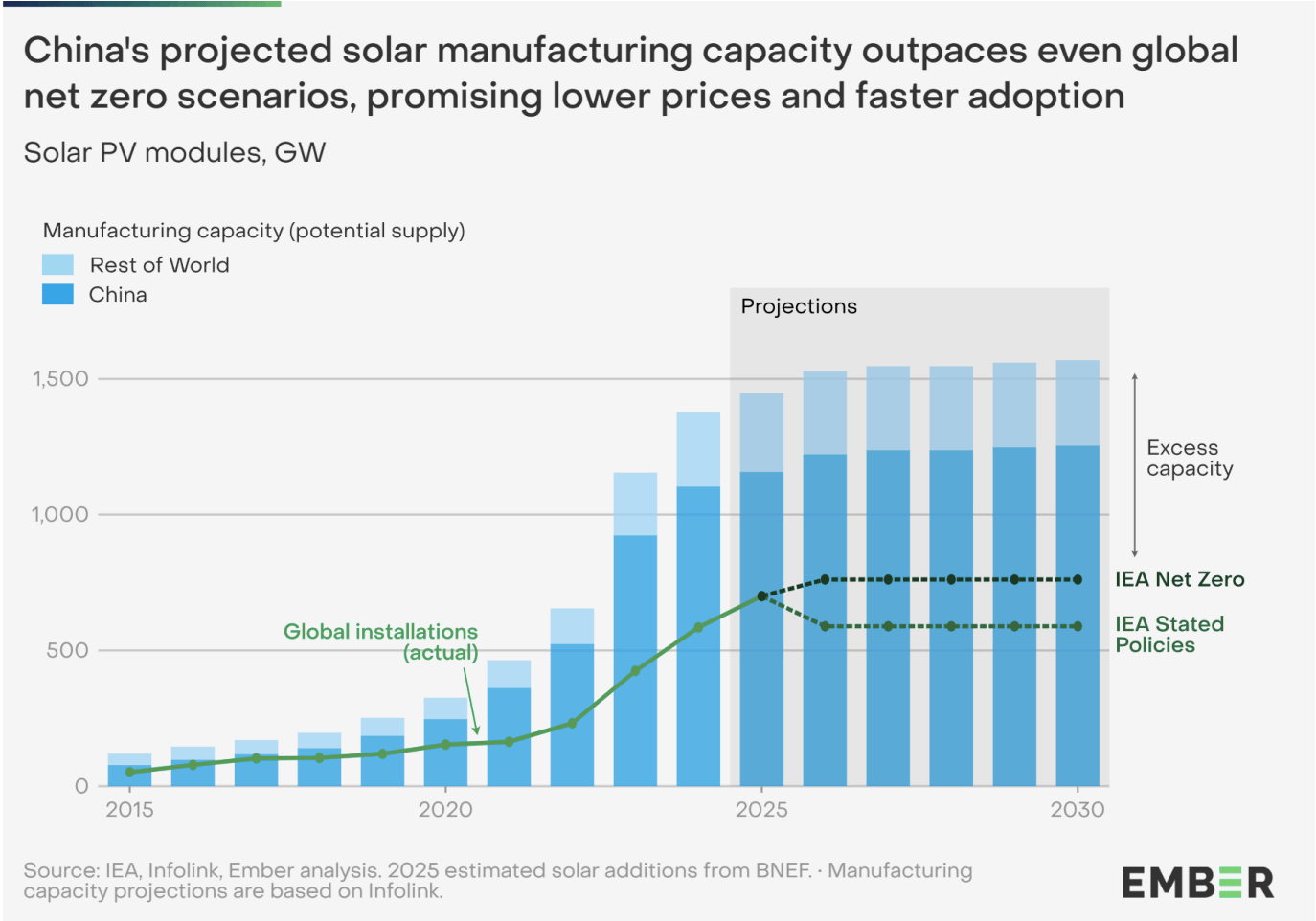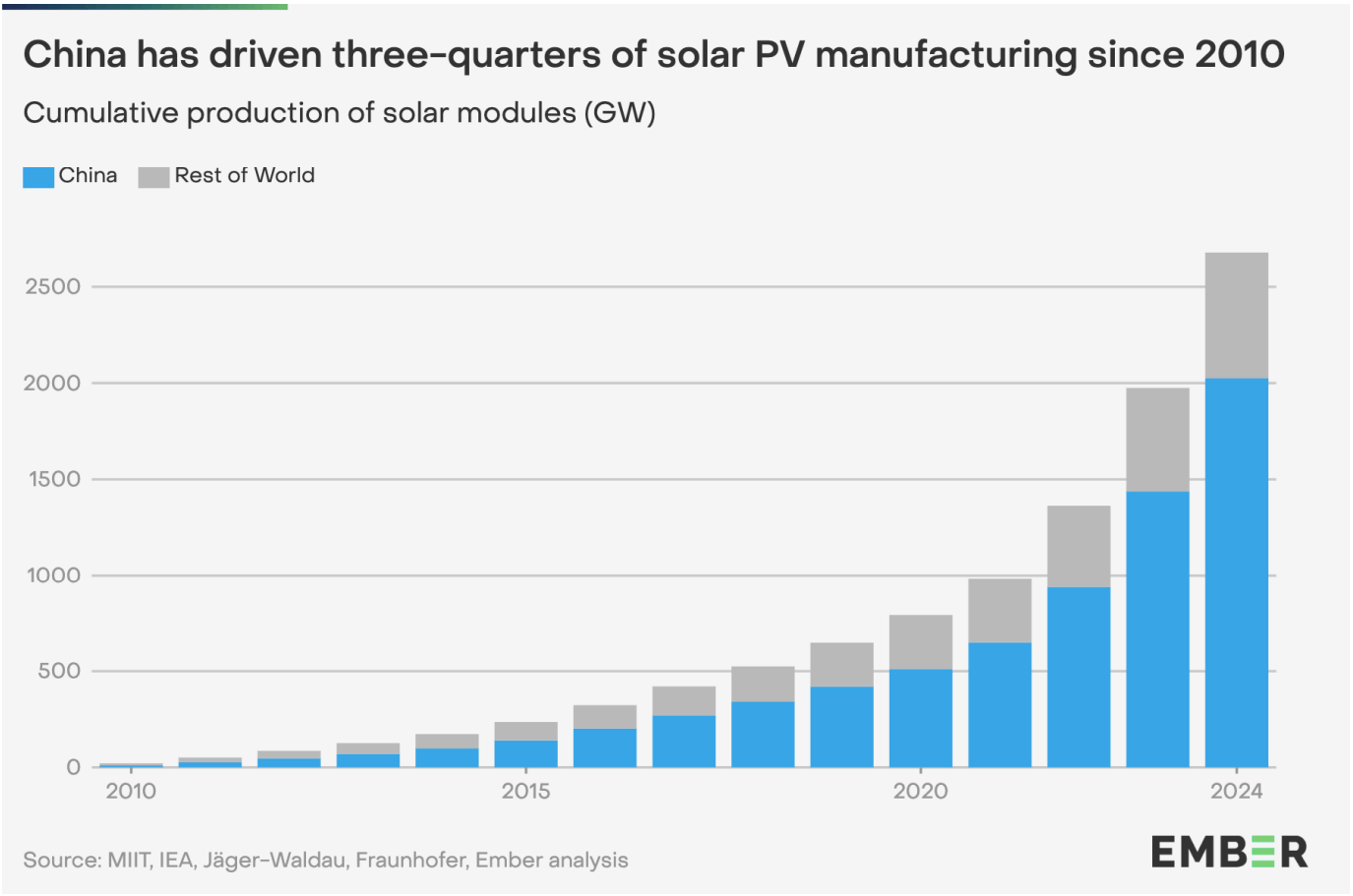I had bookmarked Noah Smith’s thread on how China is saving the world from climate change—a bold claim that cut through the usual climate doom narratives. Then I came across the China Energy Transition Review 2025 by Ember, and the data told an even more remarkable story. China’s energy transformation is not just real—it’s accelerating, and it’s globally consequential.
The Central Thesis: A World Reshaped
There is no solving climate change without China. This is not a slogan but a statement of fact, grounded in China’s sheer scale of energy consumption and its growing dominance in clean technology.
Phase 1: Domestic Transformation — Faster, Broader, Deeper
China’s transition is no longer about incremental change or simply adding renewable capacity. It has evolved into an economy-wide reconfiguration of how energy is produced, transmitted, and consumed.
Power Sector Flip
China follows a “build before break” strategy, ensuring clean systems are ready before fossil ones are phased down.
- Investment and Capacity: In 2024, China invested $625 billion in clean energy, representing 31 percent of the global total. Wind and solar capacity more than doubled in three years and now generate more electricity than nuclear, hydro, and bioenergy combined.

-
The Turning Point: In early 2025, clean energy growth outpaced total demand growth, leading to a decline in fossil generation.
-
System Integration: Grid investment reached $85 billion in 2024, and battery storage capacity tripled to stabilize variable supply. Coal plants are being repurposed from baseload to flexible backup as the grid evolves.
Whole-Economy Electrification
The shift extends beyond power generation to every major sector.
-
Fossil fuel use in buildings, transport, and industry fell by 1.7 percent between 2015 and 2023.
-
Electricity use in those same sectors rose by 65 percent, signaling a structural shift toward electrification.
-
The clean-tech economy—solar, batteries, and electric vehicles—now contributes about 10 percent of GDP, growing three times faster than the wider economy.
Strategic Rationale
This transformation is guided by the vision of an “ecological civilisation,” a national strategy that ties prosperity to sustainability. China’s development model is evolving into a “growing by greening” dynamic, where economic expansion and environmental progress reinforce each other.
Phase 2: Global Impact — Cheaper, Bigger, Better
China’s domestic shift is rewriting the economics of the global energy system. Through scale, manufacturing efficiency, and rapid innovation, it is driving down costs and enabling an energy transition far beyond its borders.
Manufacturing Scale and Cost Declines
- China now produces 80 percent of global solar panels, 60 percent of wind turbines, and 70 percent of battery cells.


- These volumes have cut clean-tech prices by 60 to 90 percent since 2010, making 91 percent of new renewable projects worldwide cheaper than fossil alternatives.
Technological Leadership
Chinese firms file around three-quarters of all global clean-tech patents. They are pioneering technologies such as ultra-high-voltage transmission lines that carry 12 GW of power across 3,300 kilometers, advanced battery chemistries, and ten-minute EV charging—pushing the boundaries of what is technologically possible.
Enabling the Leapfrog
Affordable Chinese technology has allowed emerging markets to skip over the fossil-fuel era.

-
One-quarter of emerging markets are now more electrified than the United States.
-
Sixty-three percent have a higher solar generation share, with countries such as Brazil, Chile, Kenya, and Vietnam charting a cleaner development path.
The Global Consequence
Between 2012 and 2021, China accounted for two-thirds of the world’s increase in fossil fuel demand. Today, the trend has reversed. Its rapid expansion of renewable power and electrified industry has brought it to the edge of a structural fossil-fuel decline.
The implications are profound: as China peaks, so too may the world.
This represents a fundamental shift in the climate narrative. While Western discourse often focuses on China as a major polluter, the reality is more nuanced. China is simultaneously:
- Plateauing domestic fossil fuel consumption - Breaking the link between economic growth and emissions
- Flooding global markets with cheap solar panels - Making clean energy economically competitive worldwide
- Manufacturing the infrastructure needed for a global energy transition
The implications are profound. China isn’t just cleaning up its own act—it’s providing the tools for the rest of the world to decarbonize at scale and speed.